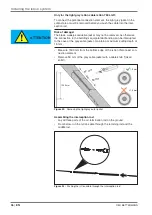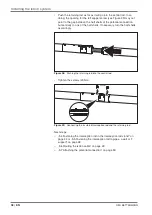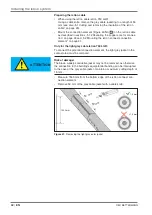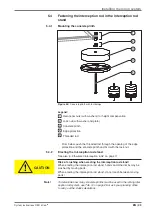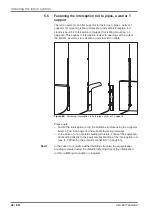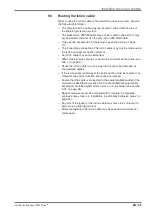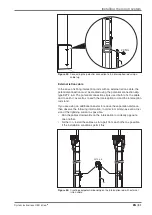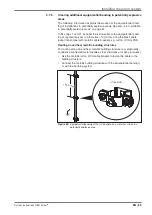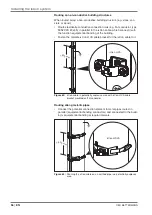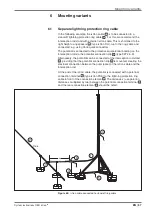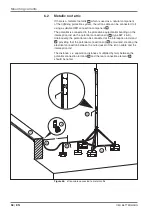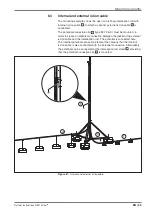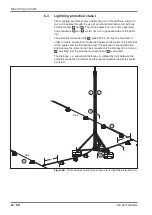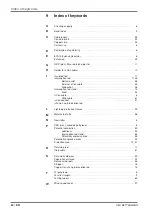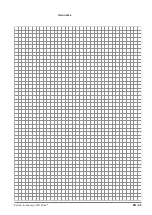
OBO BETTERMANN
50 | EN
Installing the isCon system
5 7
Attaching the potential connection
If there is a direct lightning strike to the interception rod, the incoming en-
ergy is run through the connected isCon cable to the building's lightning
arrester system. To prevent surface discharge moving away along the
surface, the isCon cable must be connected to the equipotential bonding
of the structure in the area of the two connection points.
The potential connection can me made via metallic and earthed roof
structures, generally earthed parts of the building structure and via the
protective conductor of the low-voltage system.
WARNING
Danger of lightning currents entering the building!
If, during a thunderstorm, a lightning strike runs lightning currents into
the building, the coupled currents can destroy devices, cause fires and
endanger lives.
If there is a lightning strike, the equipotential bonding must not carry light-
ning current and must be in the protection angle of the lightning protection
system.
Note!
If you use the light grey isCon cable, you must remove the grey cable
jacketing before connecting the potential connection (see „5.1.1 Removing
the light grey protective jacket (isCon 750 LGR)“ on page 29).
Note!
Before mounting a potential connection element (e.g. clip), clean the
black jacket of the isCon cable from grease and other impurities to im-
prove the electrical conductivity, using a cleaning cloth type isCon EPPA
004 (Art. No. 5408 060).
5 7 1
Installing the potential connection on an insulated interception
rod
With a calculated separation distance of s ≤ 0.75 metres, a distance of
x = 1.5 metres must be maintained between the top connection element
and the following connection for the equipotential bonding (see Figure 12
on page 20, No.
4
). The design of the isFang interception rod pro-
vides this distance through its 1.5 metre-long central rod.
The potential connection on the insulated interception rod must be de-
signed differently for interception rods with internal and external cables.
Internal isCon cable
In the case of isFang interception rods with an internal isCon cable, the
potential connection must be connected via the potential connection ele-
ment, which is located internally (see also Figure 37 and Figure 39). The
potential connection must be brought into contact with the potential con-
nection element via the bottom screw and also with the weakly-conductive
external jacket of the isCon cable.
• Slacken the bottom screw as shown in Figure 54.
• Connect the protective equipotential bonding of the building to be pro-
tected with the internal potential connection element, e.g. with a cable
lug.
• Tighten the bottom screw again (20 Nm).
Summary of Contents for isCon 750 LGR
Page 1: ...03 2014 EN isCon System instructions...
Page 65: ...System instructions OBO isCon EN 65 Own notes...
Page 66: ...OBO BETTERMANN 66 EN...
Page 67: ......

